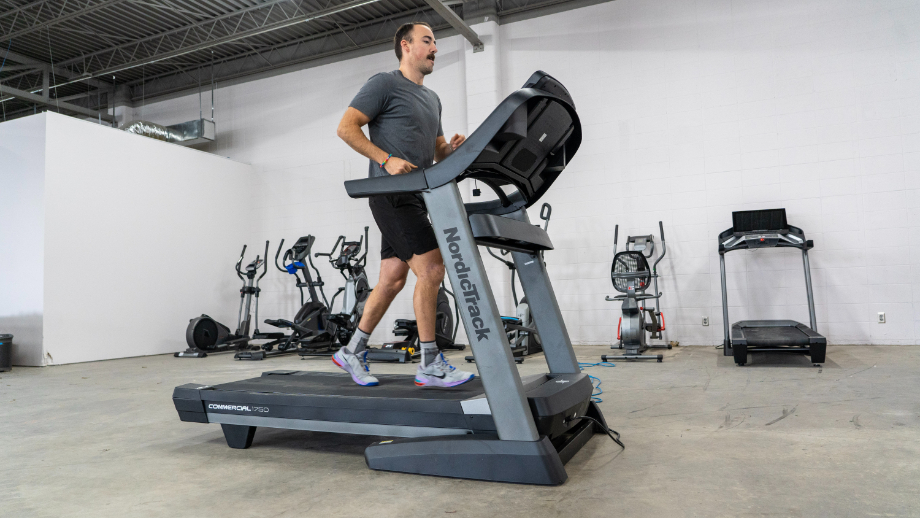We test and review fitness products based on an independent, multi-point methodology. If you use our links to purchase something, we may earn a commission. Read our disclosures.
Tips for Safety, Running Form, and More to Keep You Pain-Free During Treadmill Workouts

Running indoors on a treadmill is a fantastic workout option, especially when the weather is bad or something else precludes you from running outdoors. It may come as a surprise, but treadmill running can actually result in more pain and injury prevalence than outdoor running, largely due to the confinements of the treadmill belt and repetitive nature of the movement.
Here, we’ll look at some common treadmill injuries and pain points, and discuss prevention tactics with board-certified doctor of physical therapy and orthopedic specialist, Dr. Mike Masi of Masi Fitness.
Hip Pain
What might cause it: muscle strain, tendonitis, IT band syndrome, muscle tendon bursitis, osteoarthritis, fractures, labral tear, impingement, overuse
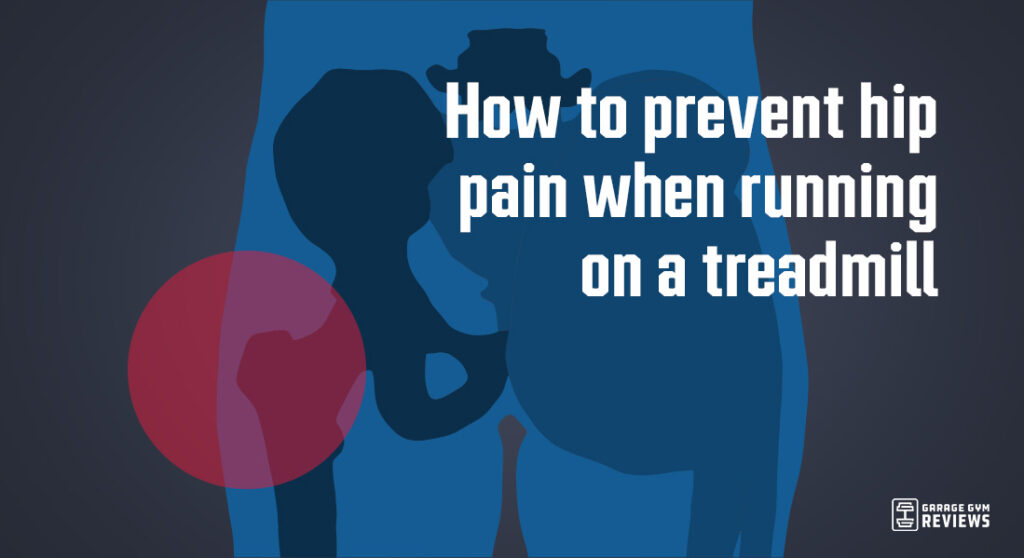
How to Prevent Hip Pain When Running on a Treadmill
“As you can see, there are many possible causes of hip pain when running,” says Dr. Masi. “The corrective course of action depends entirely on the cause.”
“The good news is that minor hip pain when running often stems from conditions that resolve with rest and relatively simple interventions that most people can do on their own, such as movement and stretching exercises,” he explains. “Managing fatigue through rest and recovery tactics are often overlooked and undervalued strategies for prevention—not every injury requires treatment.”
“However, should you find that your pain is not decreasing through those strategies—or you’re in severe pain that limits your range of motion—it’s best to talk to a physical therapist and start treatment.”
Related: Is Running on a Treadmill Bad for You?
Knee Pain
What might cause it: patellofemoral pain syndrome (PFPS) , IT band syndrome, torn meniscus, osteoarthritis, torn knee ligament (ACL, MCL, PCL, LCL)
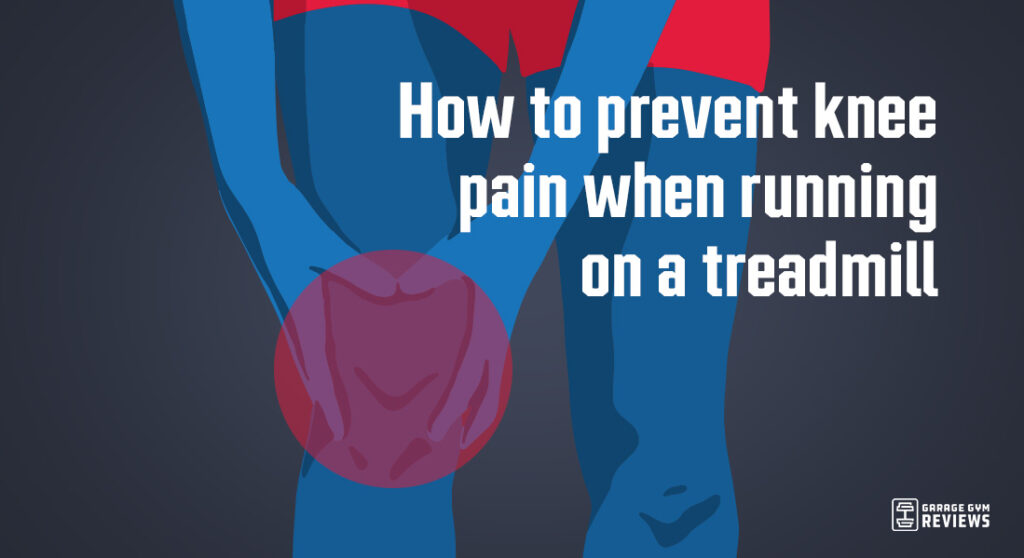
How to Prevent Knee Pain When Running On a Treadmill
“If your knee pain is originating from a torn ligament or torn meniscus, you’ll likely have to see a healthcare professional for treatment, even if the tear is minor,” Dr. Masi explains. “A tear or sprain may have lasting implications for the integrity of the knee and it won’t always heal on its own, especially if you attempt to keep running on it.”
“Patellofemoral pain syndrome is so common in runners that it’s referred to as ‘runner’s knee,’” Dr. Masi says. “This, too, can usually be avoided by maintaining a prophylactic rest schedule and not overdoing your mileage.”
“IT band syndrome can affect the knee as well as the hip, and it’s generally attributed to overuse—sensing a theme here?” Dr. Masi quips.
“Variability is a strong weapon in the programming arsenal that helps mitigate the chances for overuse injuries,” he explains further. “Due to the redundancy of endurance sports/exercises, cross-training offers the benefit of applying a healthy stimulus to the tissues in question that are outside of the typical high-volume low-intensity parameters of running.”
Related: Tips for Running on a Treadmill
Ankle Pain
What might cause it: muscle strains, ligament sprains, tendinitis, stress fractures
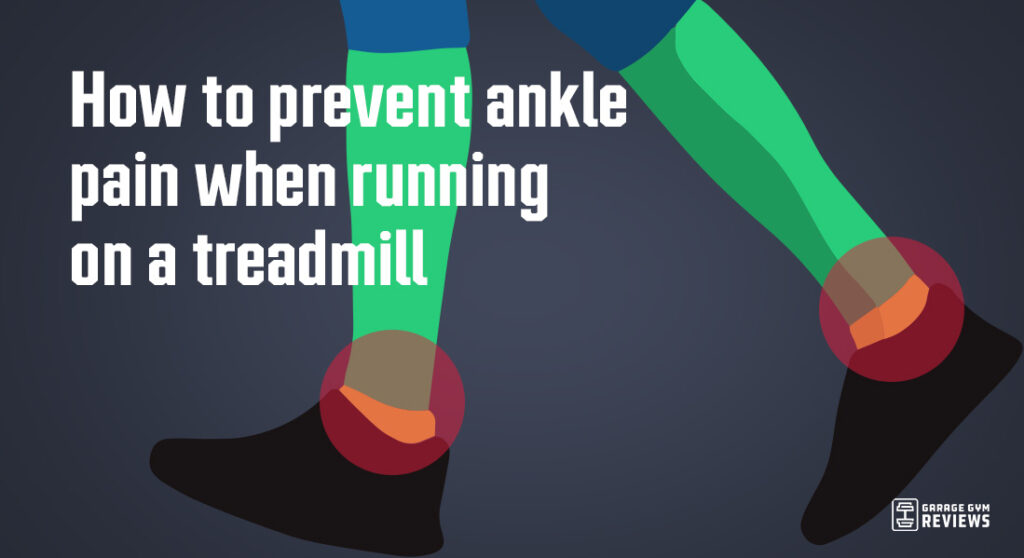
How to Prevent Ankle Pain When Running on a Treadmill
“Unfortunately, ankle pain when running isn’t usually as benign as knee pain, and typically is the result of a sprain, strain, or stress fracture,” Dr. Masi says.
“These types of injuries will require intervention, including rest, compression, elevation, and other tactics to reduce swelling. If it’s tendinitis, prescribed acutely, but there is almost always an active component to rehabilitating a tendon, such as controlled and progressive loading,” according to Dr. Masi.
Regarding prevention, Dr. Masi suggests taking stock of your shoes and ensuring they provide adequate shock absorption and don’t cause overpronation or supination of your foot. And, of course, a workout recovery plan that supports your training load.
Related: Is It Safe To Run Barefoot on a Treadmill?
Foot Pain
What might cause it: Plantar fasciitis, stress fractures
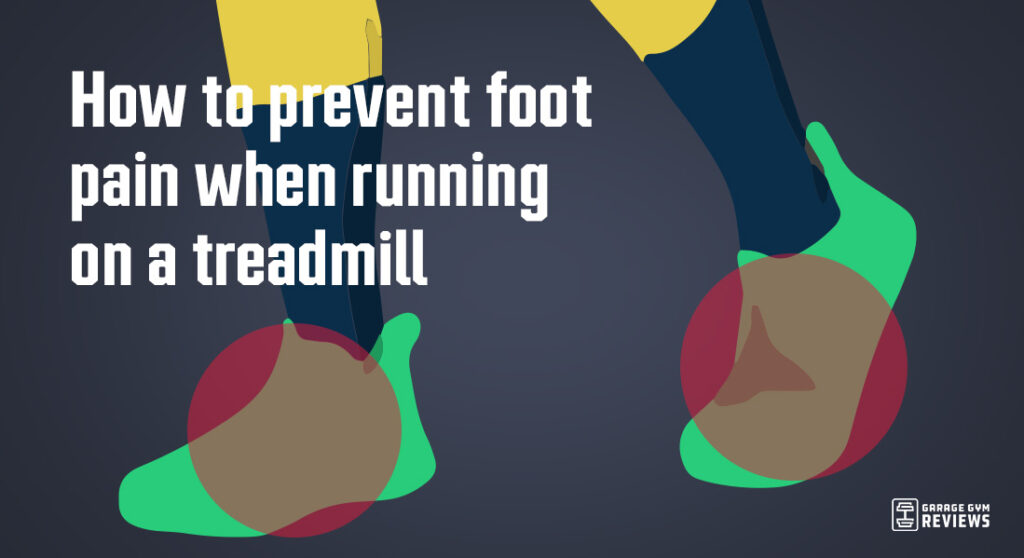
How to Prevent Foot Pain When Running on a Treadmill
“Plantar fasciitis occurs when the plantar fascia, a thick ligament along the bottom of your foot, becomes inflamed or tears. It’s one of the most common foot injuries among runners,” Dr. Masi says. “Prevention tactics include wearing footwear that’s proper for your biomechanics and avoiding sudden, large increases in workload.”
“Stress fractures in the feet, like most running injuries, also result from repetitive overuse, and can be avoided by wearing proper footwear, reducing high-impact activities, and maintaining proper biomechanics. Treatment, unfortunately, requires avoiding impact activities,” Dr. Masi says.
General Tips For Preventing Treadmill Injuries
In addition to the above strategies for minimizing pain while running on a treadmill, there are a lot of general precautions you can take in order to stay safe and injury-free.
Related: Ultimate Guide to Treadmill Safety
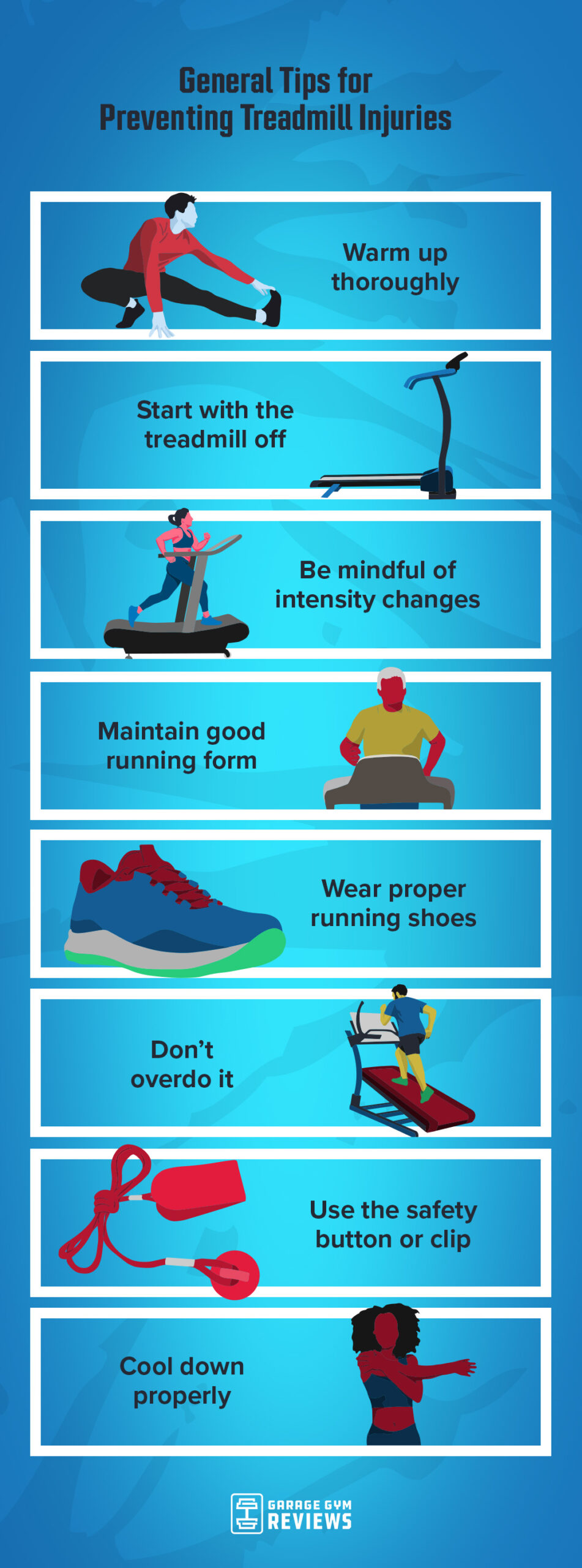
Start With the Treadmill Off
Never step onto a moving treadmill. Always stand on the treadmill with the running belt stationary, and then turn it on. This is an easy way to prevent serious injuries.
In the same vein, don’t step off of a moving belt, either. Allow the treadmill to come to a complete stop before getting off of it.
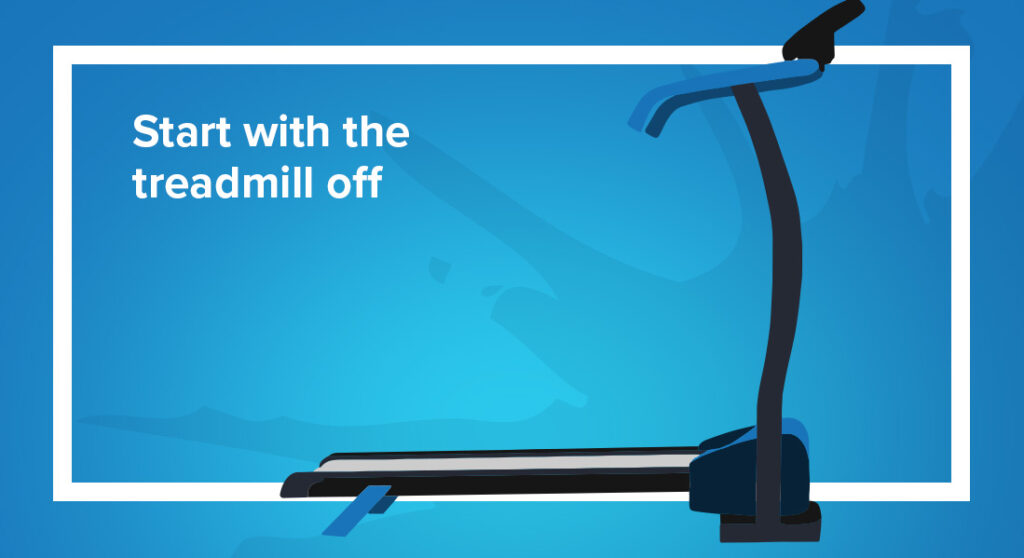
Warm Up Thoroughly
It’s well-researched that a proper warmup can help prepare the body for exercise, thus reducing injury risk. For example, a 2018 study1 reports that warming up “increases muscle temperature and blood flow, which contributes to improved exercise performance and reduced risk of injuries to muscles and tendons” and that dynamic range of motion exercises may enhance exercise performance.
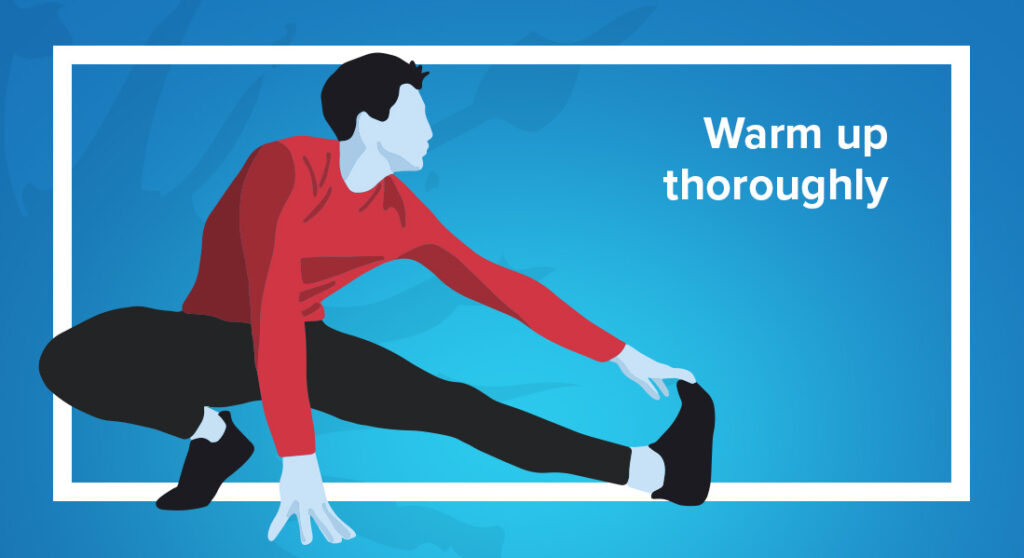
Be Mindful of Intensity Changes
Increase and decrease both the speed and incline settings gradually. Doing so allows you to gradually adjust your stride pattern to accommodate the new settings.
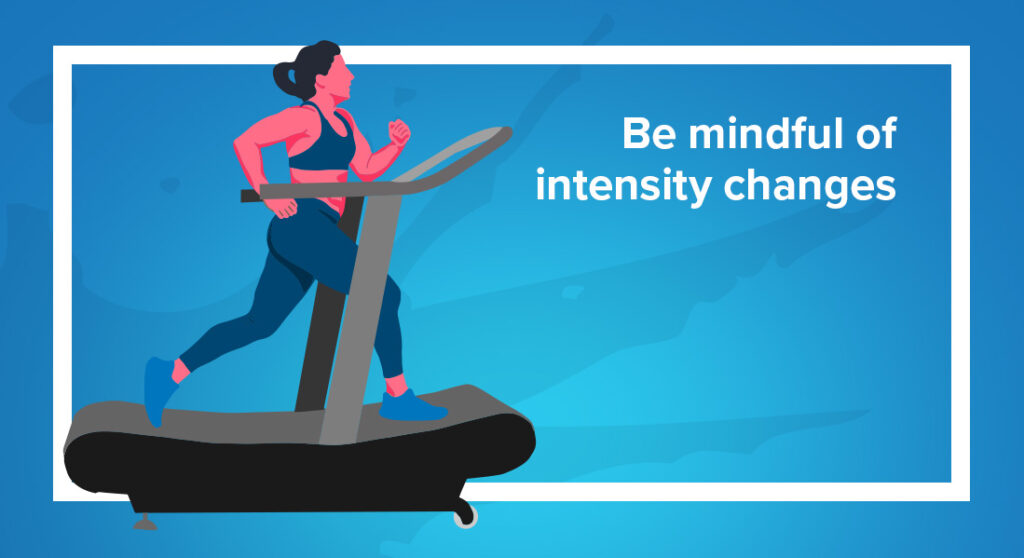
Cool Down Properly
The relationship between cool-downs and injury prevention isn’t as clear2 as that of warm-ups, but some research does show that an intentional cool-down period post-workout can reduce muscle soreness3, which may improve next-day performance and technique.

Maintain Good Running Form
Proper biomechanics, AKA form, are key to injury prevention. Good running technique can be the difference between a solid session and one that puts you out with a nagging hip injury.
This is especially important during treadmill runs, as research4 has shown that mechanical properties in treadmills can affect running performance as compared to running outside on track or turf. Other research5 has found that running kinematics differ from treadmills to outdoor surfaces, particularly regarding foot strike6.
Proper running form is of the utmost importance when walking, jogging, or sprinting on a treadmill, and maintaining good technique is the best way to stay injury-free7 both on the pavement and on the tread belt.
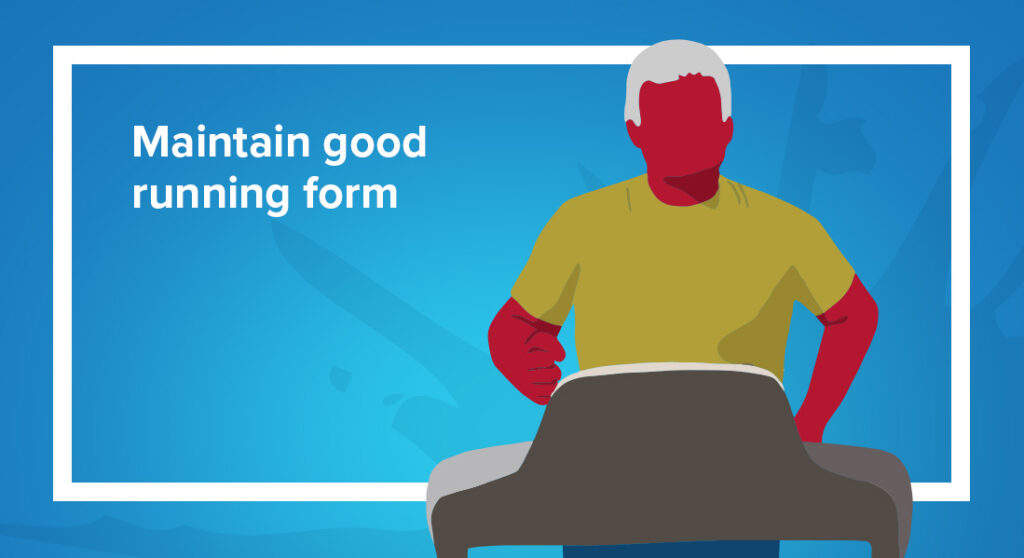
Wear Proper Running Shoes
Don’t wear sandals, flip flops, boots, or anything you wouldn’t normally run in while on a treadmill. Wear running shoes and make sure they’re laced well to prevent a slip, trip, or fall.
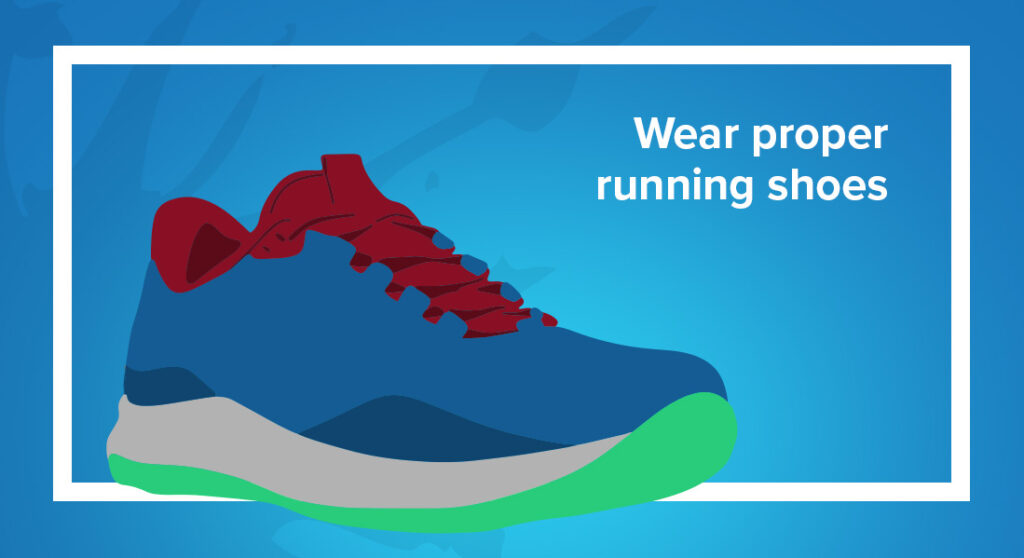
Don’t Overdo It (Respect Your Body)
Many times, running injuries occur from overuse. In fact, up to 79.3% of running injuries may be attributed to overuse, according to a systematic review in the journal Sports Medicine8, and higher weekly running distances are associated with a greater risk of injury, according to a 2015 study9.
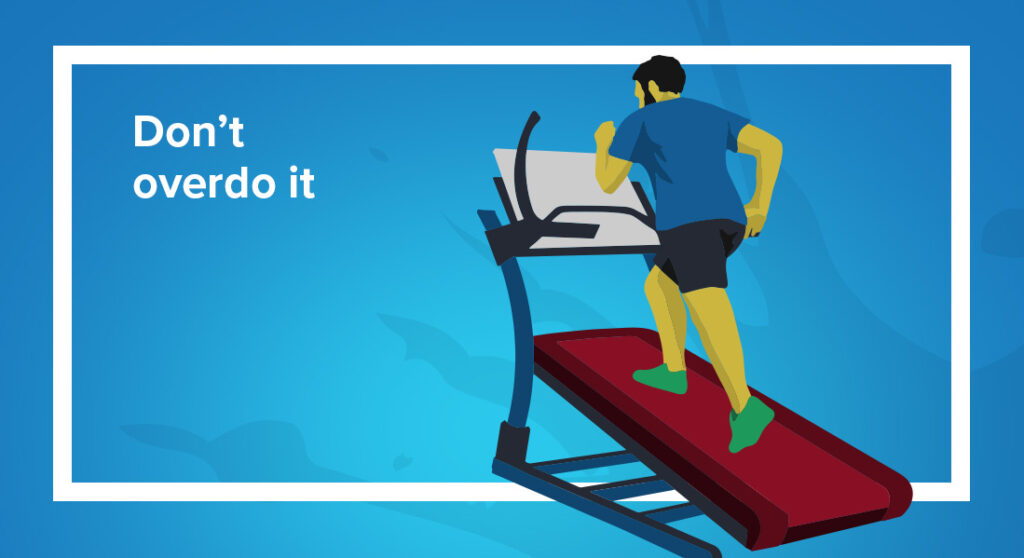
Use the Safety Button or Clip
According to the U.S. Consumer Product Safety Commission (CPSC), treadmills are the most dangerous type of home exercise equipment, with an estimated 24,400 cases resulting in emergency room visits in 201410. However, many treadmill-related injuries are preventable with one simple step: Wear the safety key found on most of the best treadmills.
This small but mighty device turns the treadmill off should you trip or fall, minimizing the potential for injury aside from the fall itself. To illustrate, should you fall while not wearing the safety key, the treadmill belt will continue moving and can cause abrasions, scrapes, and friction burns.

Related: Treadmill Safety for Children
Keep Up With Treadmill Maintenance
Fitness equipment requires ongoing maintenance to remain safe to use. If you have a home treadmill, make sure to read the owner’s manual and keep up with regular maintenance to prevent treadmill accidents.
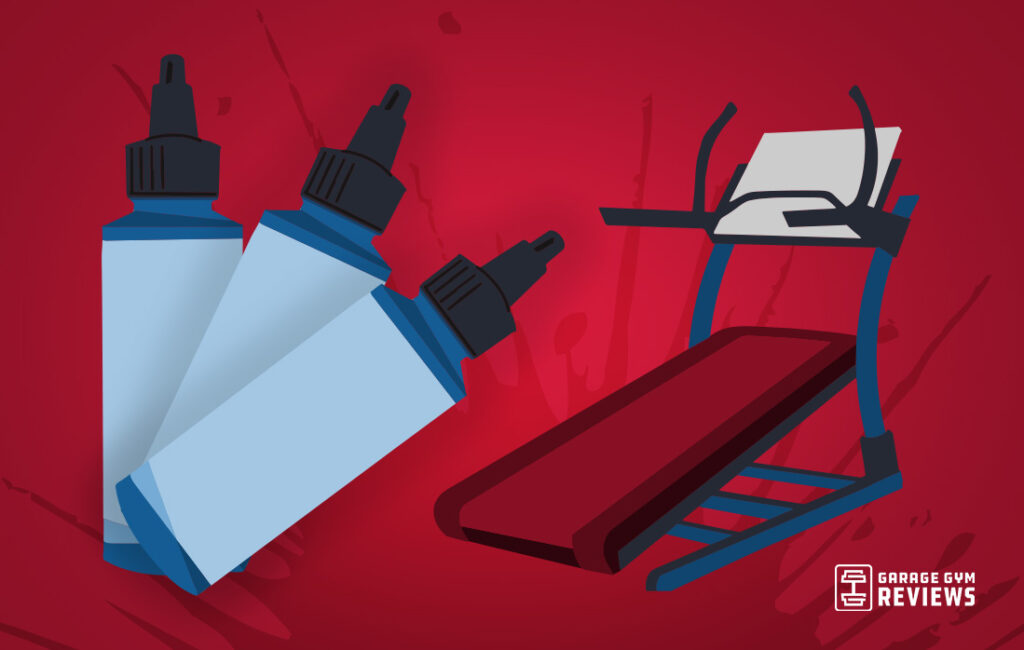
Treadmill Injuries: Final Thoughts
The most common treadmill injuries are preventable by respecting your body and respecting the machine. What we mean by that is: Practice good running form and avoid overtraining, as well as heed safety warnings on treadmills and keep up with maintenance on equipment.
Treadmill Injuries: Q&A
Why do I have hip pain when running on a treadmill?
Hip pain during running can come from a number of causes, including: strains in the hip flexor muscles, sprains in the hip flexor ligaments, overly tight hip flexors, or overuse injuries.
Can treadmills cause injury?
Treadmills can present hazards that cause injury; however, no physical activity is without risk. To avoid treadmill injuries, maintain proper running technique and practice safe gym habits, such as keeping your workout area free of clutter and wearing the treadmill safety clip.
What should you not do on a treadmill?
When using a treadmill, don’t start with the belt moving and don’t step off with the belt moving. Also, don’t program the treadmill to move faster than you can, and don’t wear any footwear besides sneakers.
What do I need to know before using a treadmill?
Before using a treadmill, it’s important to understand all of the safety features and know how to use the console. It’s also important to have a firm understanding of good walking or running form so as to avoid musculoskeletal injuries.
References
- Park HK, Jung MK, Park E, et al. The effect of warm-ups with stretching on the isokinetic moments of collegiate men. J Exerc Rehabil. 2018;14(1):78-82. Published 2018 Feb 26. doi:10.12965/jer.1835210.605
- Van Hooren B, Peake JM. Do We Need a Cool-Down After Exercise? A Narrative Review of the Psychophysiological Effects and the Effects on Performance, Injuries and the Long-Term Adaptive Response. Sports Med. 2018;48(7):1575-1595. doi:10.1007/s40279-018-0916-2
- Olsen O, Sjøhaug M, van Beekvelt M, Mork PJ. The effect of warm-up and cool-down exercise on delayed onset muscle soreness in the quadriceps muscle: a randomized controlled trial. J Hum Kinet. 2012;35:59-68. doi:10.2478/v10078-012-0079-4
- Colino E, Felipe JL, Van Hooren B, et al. Mechanical Properties of Treadmill Surfaces Compared to Other Overground Sport Surfaces. Sensors (Basel). 2020;20(14):3822. Published 2020 Jul 9. doi:10.3390/s20143822
- Sinclair J, Richards J, Taylor PJ, Edmundson CJ, Brooks D, Hobbs SJ. Three-dimensional kinematic comparison of treadmill and overground running. Sports Biomech. 2013;12(3):272-282. doi:10.1080/14763141.2012.759614
- Van Hooren B, Fuller JT, Buckley JD, et al. Is Motorized Treadmill Running Biomechanically Comparable to Overground Running? A Systematic Review and Meta-Analysis of Cross-Over Studies. Sports Med. 2020;50(4):785-813. doi:10.1007/s40279-019-01237-z
- Souza RB. An Evidence-Based Videotaped Running Biomechanics Analysis. Phys Med Rehabil Clin N Am. 2016;27(1):217-236. doi:10.1016/j.pmr.2015.08.006
- Willwacher S, Kurz M, Robbin J, et al. Running-Related Biomechanical Risk Factors for Overuse Injuries in Distance Runners: A Systematic Review Considering Injury Specificity and the Potentials for Future Research. Sports Med. 2022;52(8):1863-1877. doi:10.1007/s40279-022-01666-3
- van der Worp MP, ten Haaf DS, van Cingel R, de Wijer A, Nijhuis-van der Sanden MW, Staal JB. Injuries in runners; a systematic review on risk factors and sex differences. PLoS One. 2015;10(2):e0114937. Published 2015 Feb 23. doi:10.1371/journal.pone.0114937
- Rettner, Rachel. “Dave Goldberg Death: Treadmills Linked with 3 Fatalities Yearly” LiveScience, 05 May 2015.
Further reading

Wondering how to use a treadmill for interval training? Your wish is our command. Read more

In our ProForm 6.0 RT Treadmill Review, we take a look at the specs of this now-discontinued treadmill. Read more

NordicTrack is known for their cardio equipment, but can they compete in the smart home gym space? Find out in our NordicTrack Fusion CST review. Read more

With a compact footprint, sizable deck, but a small motor, is this folding treadmill a shining star? Find out in our FEIER Treadmill Star 100 review. Read more

